By Daniel Erbrecht.
Did you know that some types of window coverings are a bad idea if you have pets in the home? Or that certain window blinds can be dangerous for children? Did you know that some types of window treatments work better for condos vs houses? Avoid problems further down the road by purchasing the right type of window covering for your project.
For large condo windows, go with roller shades, panel tracks, or vertical blinds
These types of window coverings are designed for larger window spaces. I have installed these products on windows up to 14 feet wide by 10 feet tall.
Roller Shades
This is a job I did in a condo in downtown Toronto back in 2016. As you can see, the windows are quite tall. Roller shades are an excellent choice and can span a maximum size of approx 130″ x 130″. While I usually recommend doing multiple roller shades for wider windows, you can get away with 1 large roller shade (if required, for a bedroom for example) using a new technology called spring-assist, which uses an internal spring to guide the roller shade as you roll it up and down. This is not available from all manufacturers, but is something I discuss with every client who has larger windows.
The product pictured here is actually solar shades, which block out 97% of U/V rays, protecting your furniture and flooring from discolouration, while still allowing you to see outside.
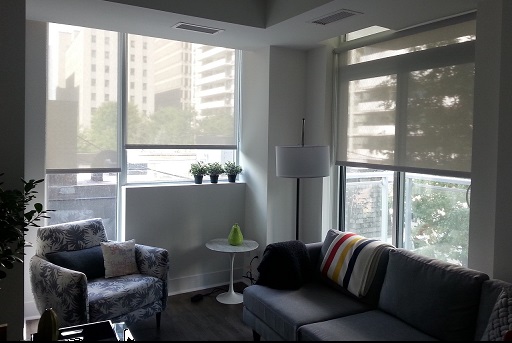

Panel Tracks
This is from one of my installs done recently in North York. Panel tracks are an interesting product that actually uses the same type of materials as roller shades. Instead of the material rolling up and down, it comes in panels 2′ – 3′ wide that slide from side to side. It allows spans of up to an incredible 16 feet wide on just one track!
Panel Tracks
Panel tracks are also great for patio doors, since they slide back and forth similar to how the door slides back and forth. They blend in nicely with the roller shades on the rest of the windows, as we can use the same material for the roller shades as we do for the pane tracks.

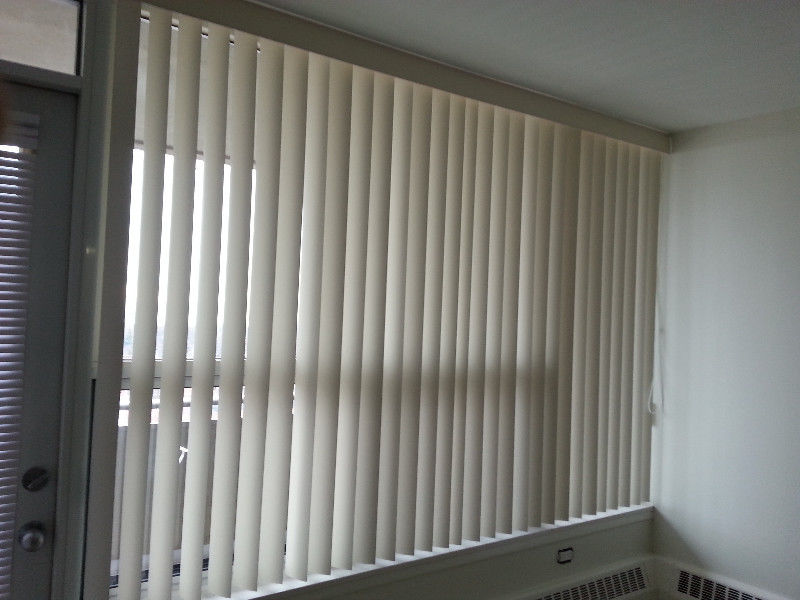
Vertical Blinds
While not as popular as they once were, vertical blinds are still being used for patio doors, wide condo windows, and office buildings.
They also work well for windows that have air-conditioners installed in them, as the vertical slats can be trimmed to stop above the AC unit. When the unit comes out in the fall, the short slats can be removed and full-length slats installed in their place.
There are a number of considerations to keep in mind with vertical blinds. Generally, the user needs to be a bit more careful operating these than something like roller shades. For example, if you have the window open in the summertime and don’t move the vertical blinds out of the way, the draft could cause slats to break off, alignment issues, etc.
Vertical blinds are a good choice for the price. But if you are renting out your condo to a tenant, you may want to consider roller shades or vertical blinds instead, as they do tend to be more durable. Your tenant may not be as gentle with their blinds as you might be!
If you have a house, consider horizontal blinds, Hi-Lite shades, sheer horizontal shades, or shutters
These types of window coverings are ideal for smaller windows as generally found in houses or townhouses.
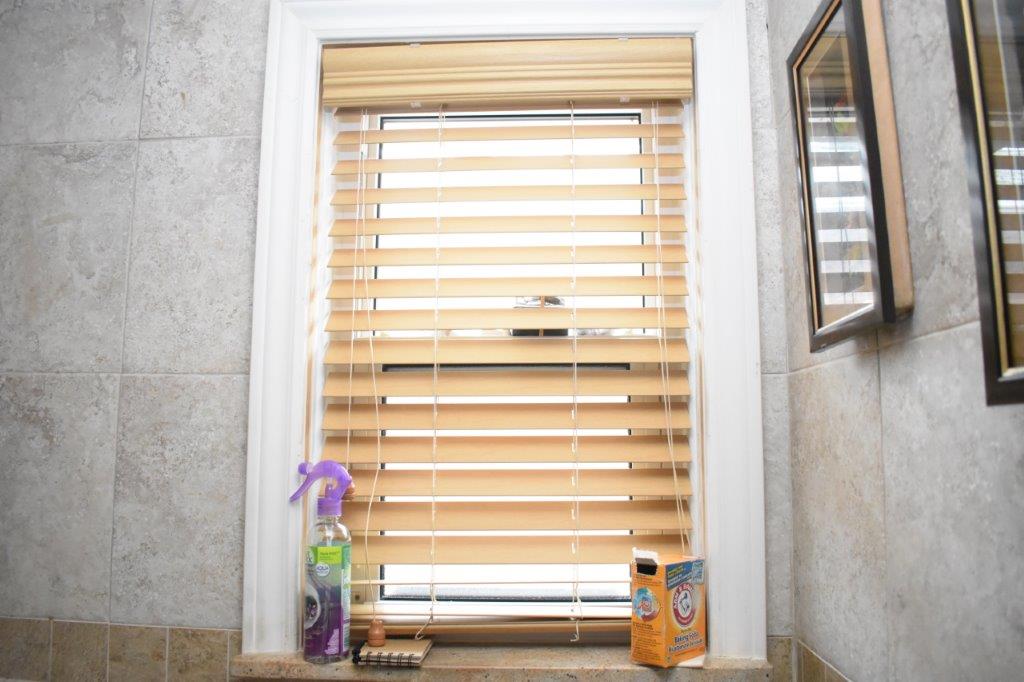
Horizontal Blinds
Faux wood horizontal blinds are a popular option in houses. They are more affordable than real wood blinds and are also resistant to moisture / humidity. They work well on windows that are up at least a few feet above the floor, as the cords to become longer as the blinds are pulled up, and dangling cords can be an issue for pets or children. Decorative valences are available, which look like window trim and blend in nicely with the existing trim around your window.
Venetian Blinds
Venetian blinds are not done too often in houses anymore, but are still commonly installed in office buildings. Pictured here is a job we did back in 2015 in an office building in Mississauga.
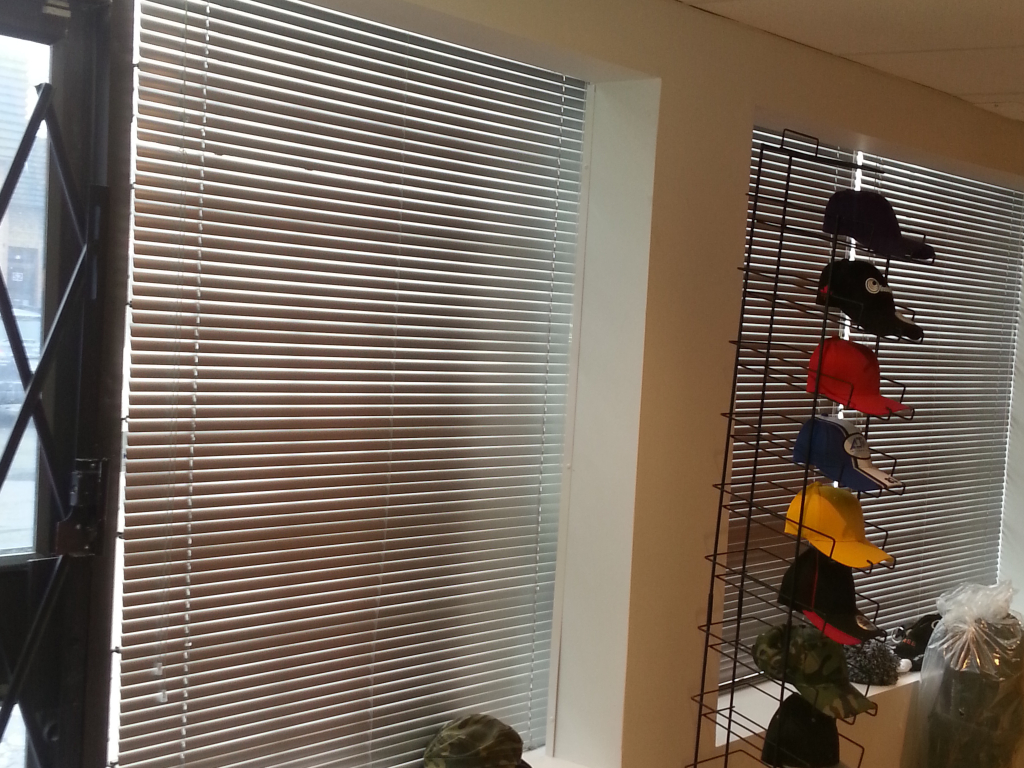

Hi-Lite Shades
It doesn’t get any better than this. Hi-lite shades are the newest craze in window coverings. They are by far one of the most elegant and functional types of window coverings you can put on your windows. There are actually 2 layers of material, with a stripe pattern on them. One part of the stripe is opaque, the other is transparent. As you roll the shades up and down, the stripes on the front and back materials alternate, so that you either have a partial view of outside or a closed look.
The photos below from one of our recent installs demonstrates this nicely:
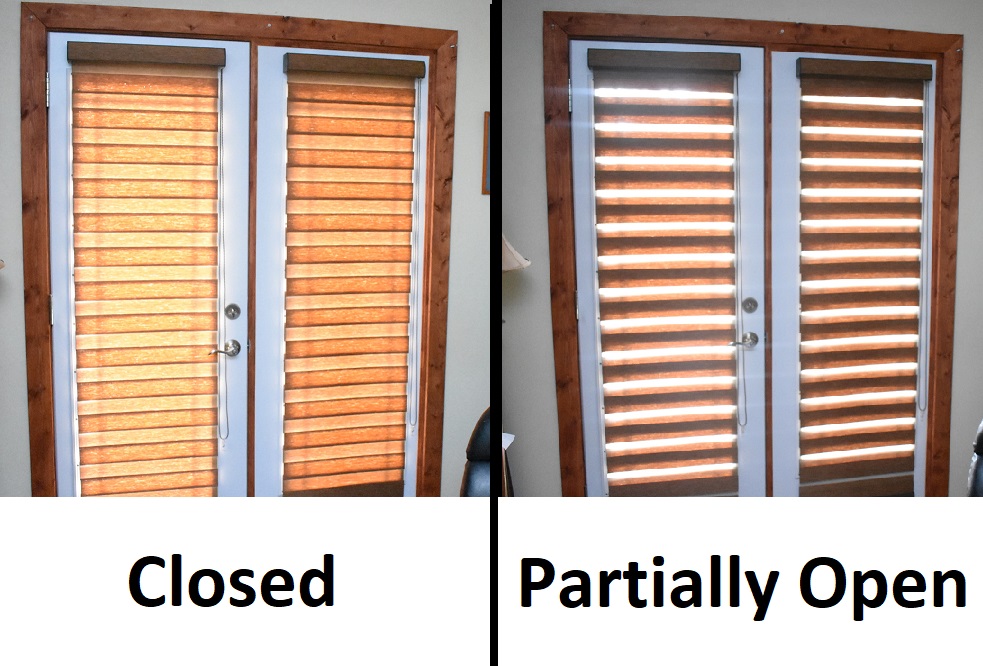
These types of shades are easier to clean than the sheer horizontal shades seen below, as you can actually run your hand / duster completely in-between the two layers of materials, whereas in the sheer horizontal shades seen below, the materials are separated into horizontal “pockets” which makes cleaning more time-consuming.
Sheer Horizontal Shades (Silhouettes)
These types of window shadings were popularized by Hunter Douglas many years ago. They are an elegant choice and popular alternative to drapery. They give the look of soft drapes but in the form of a shade that can be pulled up and down. They have horizontal stripes similar to the hi-lite shades above, but the stripes can only be closed when the shades are all the way down.
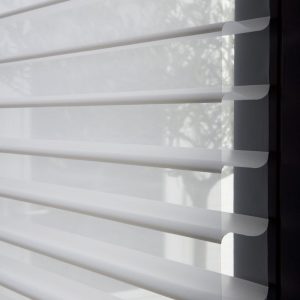
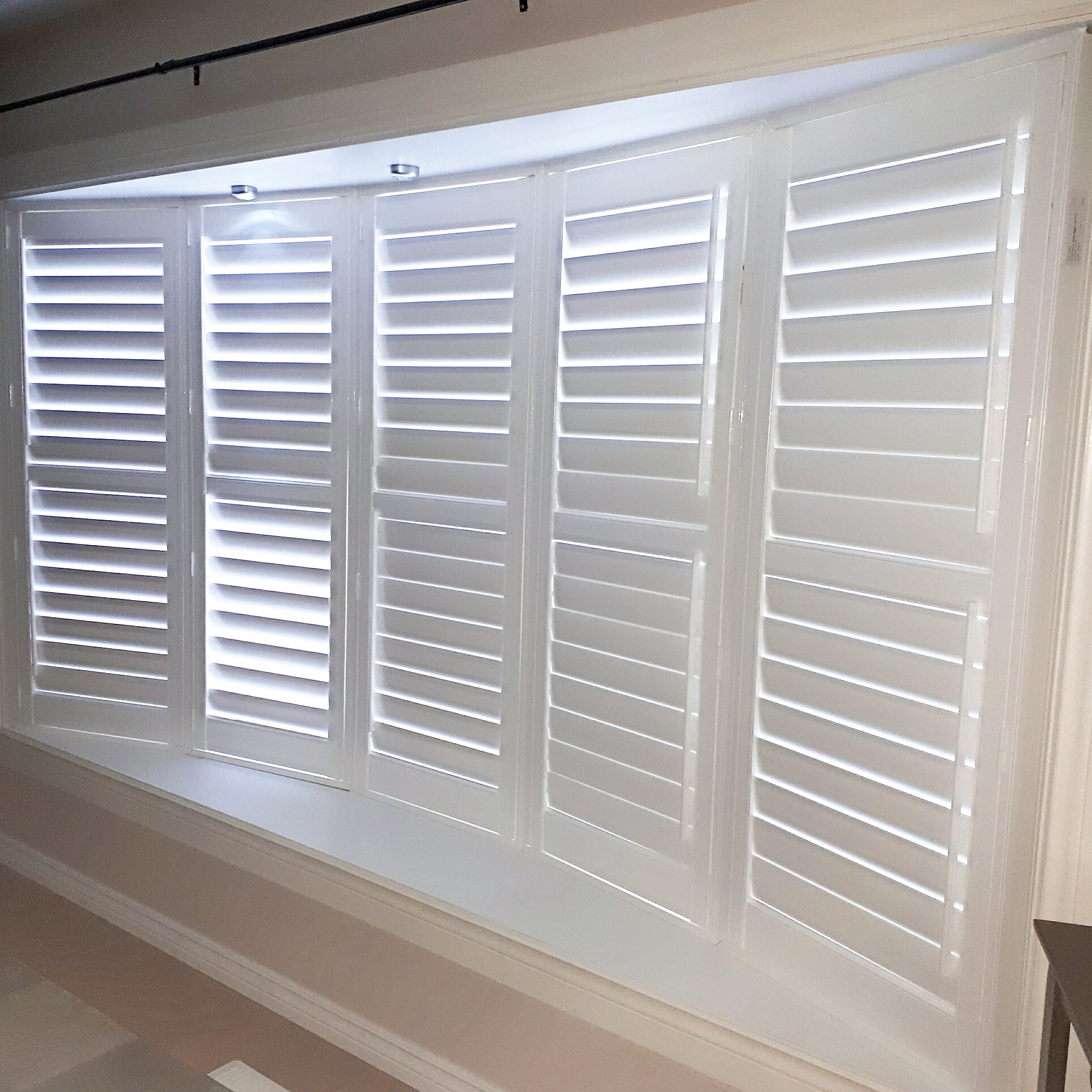
Shutters
And finally last, but certainly not least, are california / plantation shutters. These are a very popular choice in houses, and for good reasons. Unlike blinds and shades, there are no cords, which means they are great for families with pets and children. They are also easy to maintain, a quick wipe with a cloth cleans them very easily. The photo above was taken from one of our installs recently on a bow window in Brampton.
Hopefully that helps summarize the types of window coverings available and the best applications for your project.
With custom blinds, the sky is the limit in terms of all the options available. There are simply too many styles and components to address them all in this post.
Remember, if child safety is an issue, consider motorized or cordless options.
For more detailed advice for your particular project, don’t hesitate to contact us for a phone consultation or in-home estimate. We’re on the road everyday and probably in your area!

